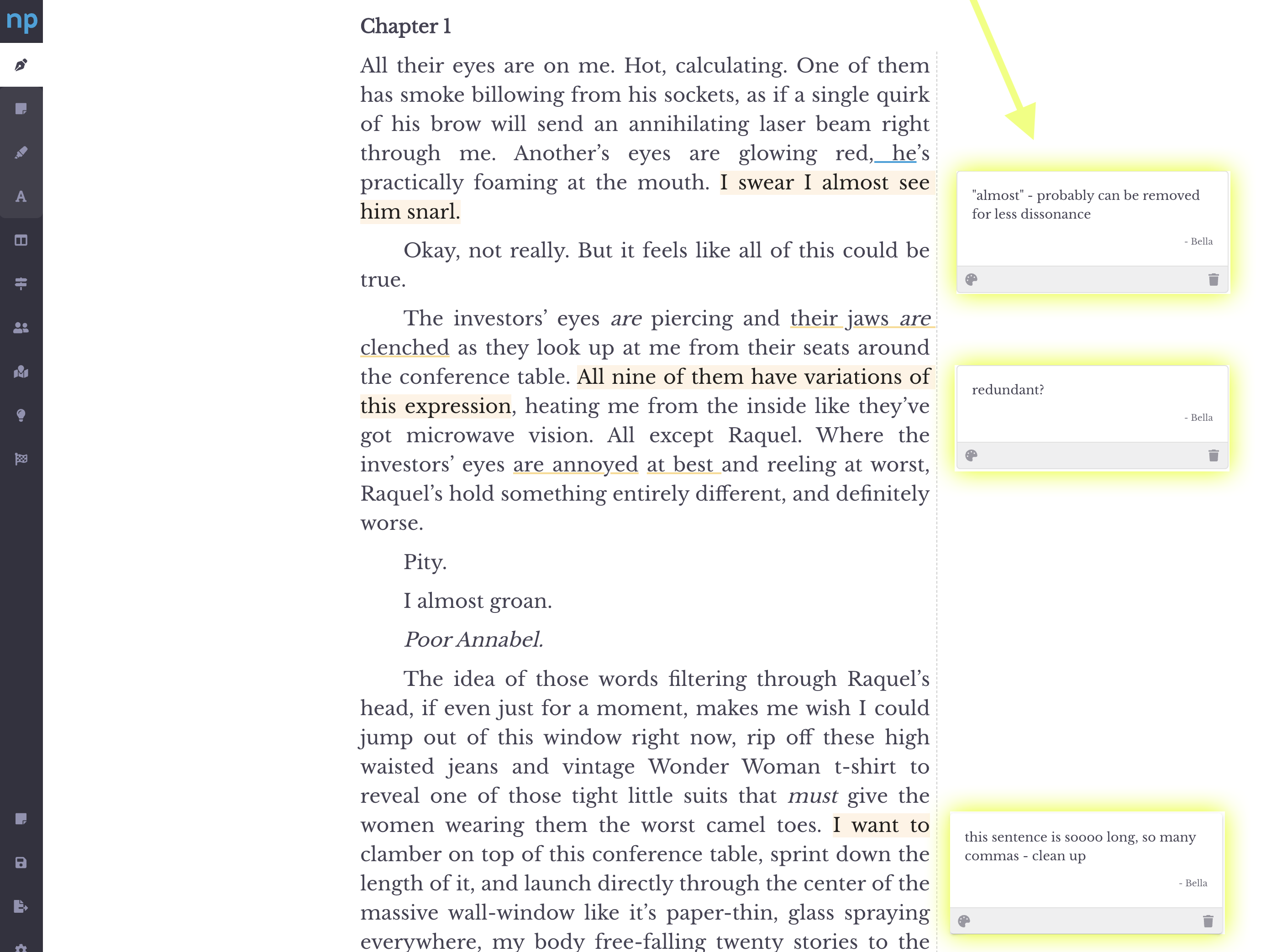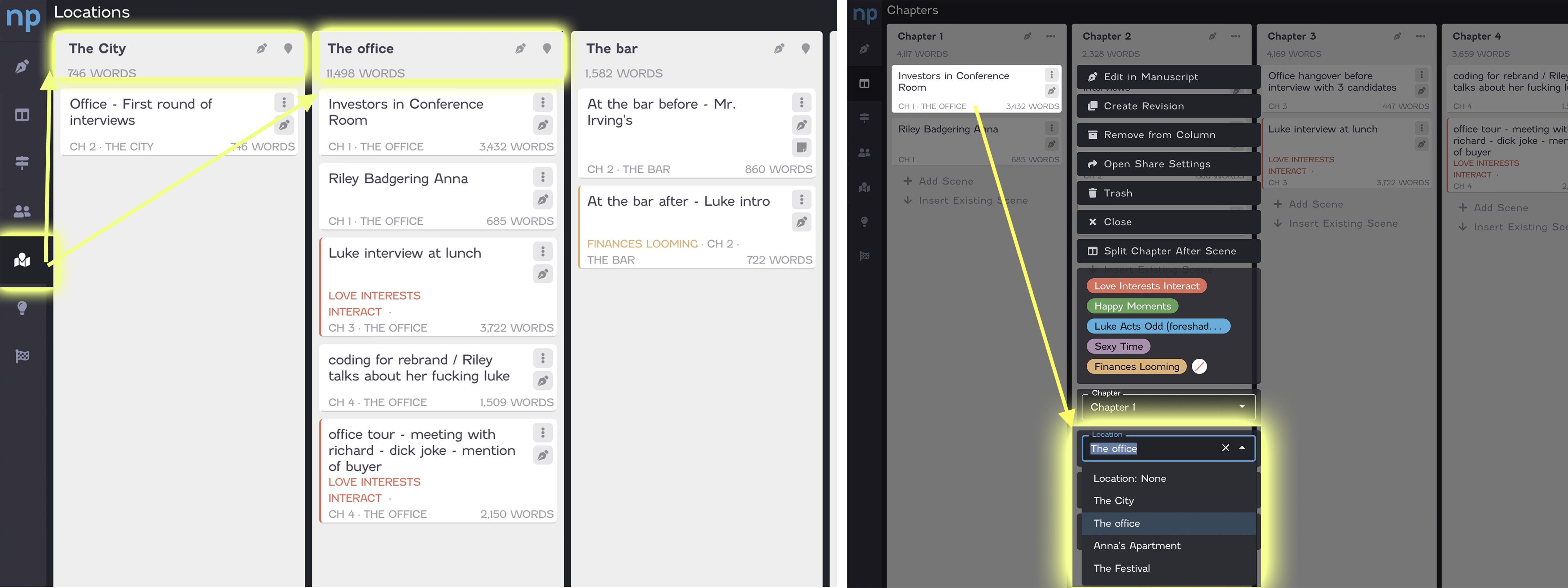How To Edit a Novel + Free Book Editing Checklist
Bella Rose Emmorey
book editor, rogue behaviorist, digital marketer, writer, brand builder, plant aunt, and cheese enthusiast.
Editing your novel is arguably the most important part of writing a book. It’s where you finally get to take your self-proclaimed pile of garbage and turn it into something that other people can read and enjoy.
Many writers fear this process because it requires you to examine an imperfect draft. But that’s the thing: it’s just a draft. You can’t produce a shiny book in one tumble. You have to polish the rough surfaces first.
So let’s get to polishing.
How to Edit a Novel for Maximum Quality
There are several ways to go through this part of the process, and it often overlaps with revising your novel—but it is different. You’ll see advice like letting the book rest before editing, reading it out loud, starting with the big picture before zooming into detailed edits...
While those are handy, we actually know that if you break up editing your novel into different sections and focus on specific tasks in each, you’ll come out with a well-rounded book where you’ve accounted for all the elements of good fiction. This will give you maximum quality.
That said, this is a general guide for editing a novel that we’ll break down further in the steps below:
1. Wait at least a week, preferably more
2. Read through the book, making notes
3. Edit the primary sections
4. Correct major inconsistencies
5. Edit scene by scene
6. Do a line edit
7. Give it to beta readers
8. Edit beta reader feedback
9. Copyedit/proofread
10. Send to the professional editor
We’ll outline these steps of editing in more detail below.
What are the steps to editing a novel?
We’ve listed the basics for editing a novel above, but they’re just that: basic. They don’t account for the various pieces that go into a good book, which is why we’ve separated editing a novel into the six phases outlined below.
To remember these and reference them while editing your own novel, bookmark this page and grab our $ free novel editing checklist$ .
1. First Read-Through Edit
The title here is mildly misleading because in this phase, you’re not doing as much editing as you are note-taking. If there are glaring fixes right away (like spelling or word choice), go ahead and fix them.
But mostly, this phase of editing your novel will be all about noting areas that are:
• Confusing
• Inconsistent
• Mistakes in characters
• Opportunities for foreshadowing
• Jumbled or unclear writing
• Scenes to potentially remove
• Scenes to potentially add
This is made a lot easier with $ NovelPad's comment function$ . All of those notes are in one place. Plus, when my critique partners read through it, they can see if I’ve already noted something and can pass over it.

Keep edit notes during your read-through.
2. Act or Part Edit
Have you heard of a Three Act Structure or the 5 Milestones of Good Novels? They’re basically guidelines you can use to structure your novel based on what we know readers enjoy. Now, these are just guidelines, and innovation as an author comes with challenging the rules, but if you’re looking for a proven way to make your novel entertaining, this is reliably how. We’ll use the three act structure for this example.
In this phase of editing your novel, you’ll hone in on:
1. The opening: This includes the first page, setting the stage for what the everyday life of your character looks like, and introducing the reader to the conflict. All of this happens before Act 1 and the inciting incident, typically in the first chapter.
2. Act 1: Here’s where you get into the meat of your novel with the inciting incident and the first major plot point. This can look like your hero being shoved into a fight against their will where they’re suddenly fighting a queen (inciting incident). This leads to your character being locked up beneath the palace (plot point 1).
3. Act 2: The bulk of this act should focus on your protagonist’s progress and failures. Are they moving toward their goal? They should be. But they should face setbacks and challenges that make hope for them succeeding seem out of reach (this includes character arc details). This act ends at the lowest of low points for your main character.
4. Act 3: The climax happens here and should account for the work you’ve been putting in to create a satisfying and exciting moment. Have you addressed open loops? Are you fulfilling the promise you made in the opening? Is the "big bad" they face as awful as you’ve built it up? It should be.
5. Resolution: Does your story tie up all the loose ends? $ Writing the end of a series vs a standalone$ means looking at closing all the loops for your standalone and opening the correct loops for your series.
3. Consistency Edit
Writing a novel can take months, if not years. That leaves room for human error in the form of inconsistencies.
Inconsistencies to edit out of your novel look like:
• Arjun's hair being cropped and brown in one scene and long and black in another
• The courtroom having a wall of windows in one scene but only one in another
• Your protagonist is allergic to perfume, then douses themselves in it for the party
• The rebellion’s secret meeting place is deep in the forest in one scene but held mid-city in another when you meant for those to be the same location each time
These are basic mistakes anyone can make if you’ve stopped and started writing your book several times. We recommend using the Locations, Plot, and Character sections in our software to keep track, then update each scene card in the Chapters section. That way, you’ll keep track of it all the entire time.

Use the Locations, Plot, and Character pages to track consistency.
4. Post Beta Edit
At this point, your draft should be as close to your "I’m happy with this" level as possible and is ready to be sent to beta readers and critique partners.
Give your critique partners direct access to comment on your draft by clicking the hamburger menu on your scene or chapter, then clicking "create" to produce a sharable URL.

Use the Share feature to collect feedback.
Beta readers are basically a group of your genre's readers that can give you early feedback on things you don't catch yourself. Usually this process takes place over a few weeks, and your beta readers fill out questionnaires.
Ask them things like: if anything is confusing, who their favorite character is and why, and any predictions they have for what's coming up.
These questionnaires should go out for every section they read, which is usually between 3-5 chapters at a time.
After you get the questionnaires back, you can create a spreadsheet or track the feedback in whatever makes sense for you. Look for commonalities you can address in editing.
5. Line Edit and Proofread
At this point, you may have already caught a lot of the grammar, spelling, or punctuation mistakes, but now it’s time to get real. While many people will hire a proofreader (in addition to the professional edit we’ll detail below), you should first do this yourself.
Read through your book line by line and look for the issues above, along with syntax problems, confusing phrasing, proper nouns, consistency in what you call things, and the flow.
Grab our $ novel editing checklist$ for a more complete list of what to look for in the line and copyedits.
6. Professional Edit
If your goal is publishing—specifically self-publishing—you’ll need a professional edit. This isn’t up for debate. This isn’t, "But I’m good at grammar, it’s fine!"
You need a professional edit, or you’ll only contribute to the (thankfully dying) reputation that self-published books are garbage, further robbing the public with quality diversified stories that don’t need "approval" from a bunch of white men sitting in corner offices (aka: traditional publishing).
There are many forms of editing, with many editors covering a few types of editing in a single package.
Here are the forms of professional editing to choose from:
• Developmental edit
• Copy editing
• Fact-checking (for historical or genre-specific accuracies)
• Sensitivity editing
• Proofreading
The cost of an editor can vary, but you should budget to spend between $.02 - $.05 per word of your manuscript.
Editing your book can be a lengthy process. Many writers spend months or longer going through these phases in order to produce a draft that is as finished as possible before sending it to the professional editor.
After all, the better version your editor gets, the less money you'll spend and the higher quality the outcome.
Like what you're reading?
Join other authors like you in NovelPad’s free writing community!
Join the communitySimilar Posts
What File Formats are Accepted by Kindle Direct Publishing?
File types for ebooks, paperbacks, and hardbacks on Amazon's KDP.
Ollie Ander
Is probably just a couple cats in a trench-coat—the hair shedding and sunlight napping are highly suspect.
How To Write Strong Atmosphere In Stories
7 best tips for creating strong atmosphere in your writing.
Hannah Lee Kidder
NovelPad Author
When is the best time to publish a horror novel? [Peak Sales Method]
Make the most of your horror book launch by strategizing with these tips.
Bella Rose Emmorey
book editor, rogue behaviorist, digital marketer, writer, brand builder, plant aunt, and cheese enthusiast.
How long is a Science Fiction Book?
How many words, chapters, and pages should be in your sci-fi novel?
Ollie Ander
Is probably just a couple cats in a trench-coat—the hair shedding and sunlight napping are highly suspect.
When is the best time to publish a romance novel?
What is the best month and day of the week to publish a romance? Do romance novelists make money?
Rina Fontes Malka
A writer with too many ideas and not enough time.
How long is a fantasy book? Words, pages, chapters, scenes, & prologues
What should wordcount goals look like for a fantasy novel?
S.R. Beaston
Crafty with words, wit, and wisdom, just add caffeine to make it more interesting.